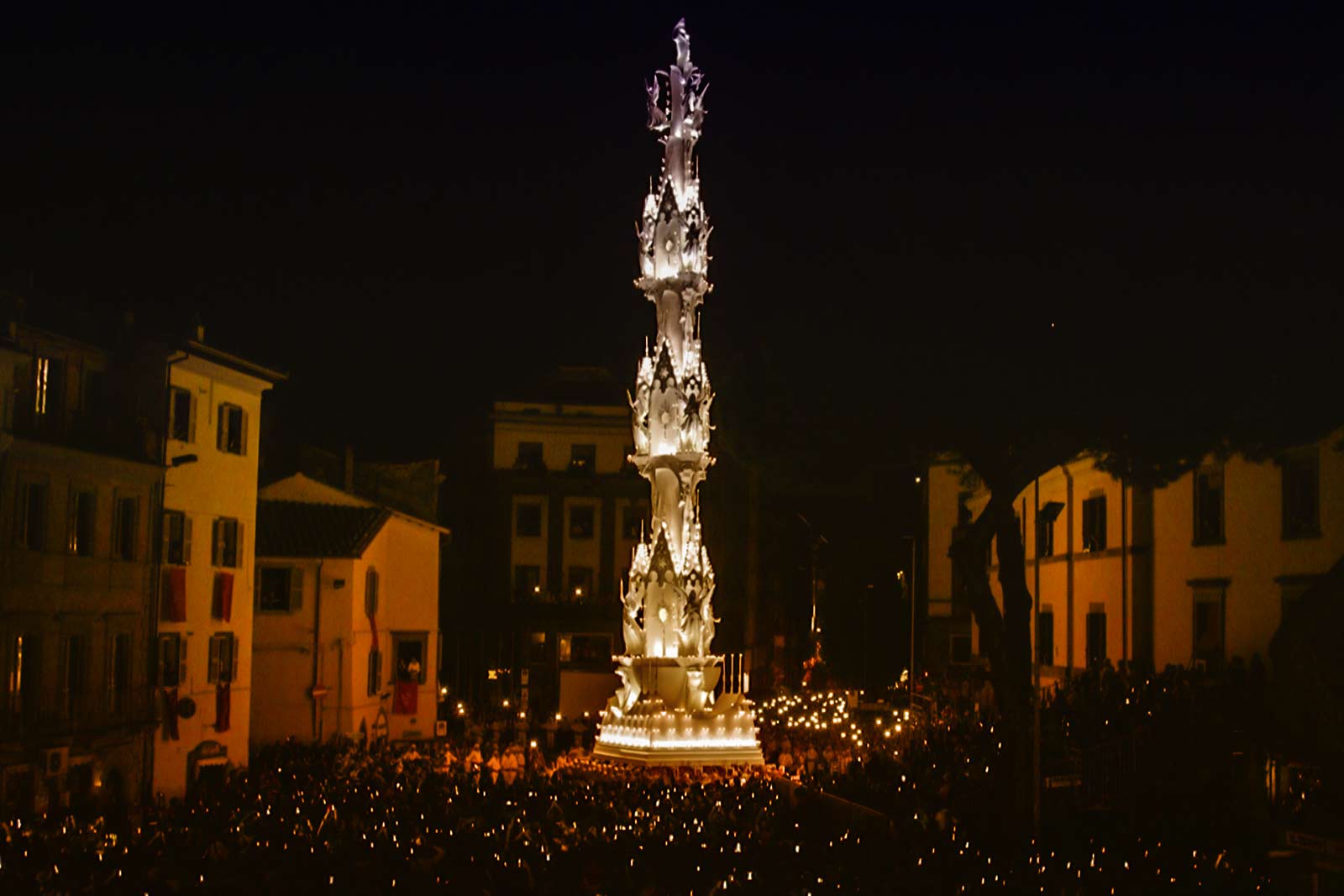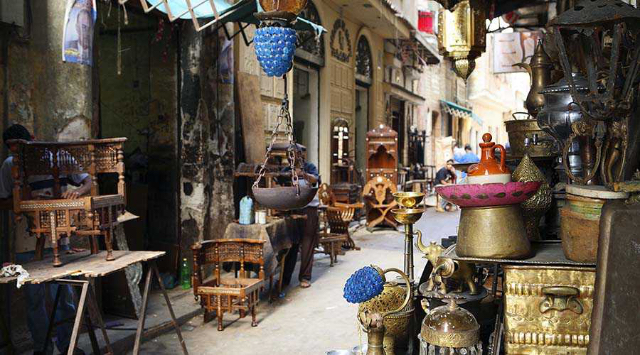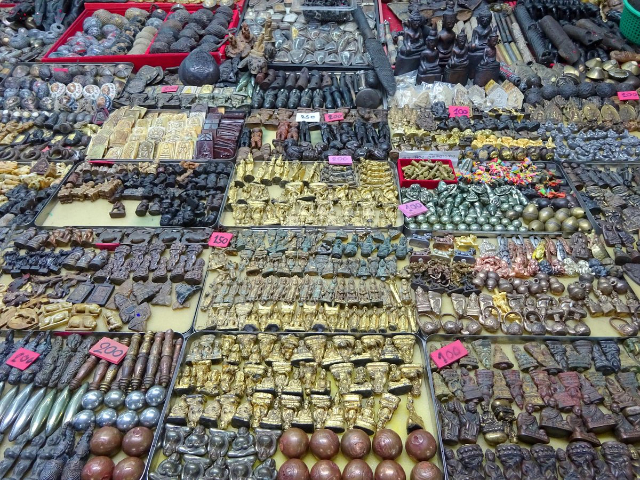In 1258 Pontiff Alexander IV, after a premonitory dream, with a solemn procession he presided over together with the cardinal’s court, had the body of the young Rose, which had been lying incorrupt in the bare earth since 1251 at the little church of S. Maria in Poggio, moved to the Church of S. Maria, where the shrine now stands.
In remembrance of that event the procession with inserted canopy transportation began to take hold, which in later years took on the name "macchina," assuming increasingly spectacular shapes and sizes. Following the mournful events of 1801, caused by the burning of the "machine," the religious procession, which until then preceded the transport, was held separately.
Since 1921, St. Rose’s heart, taken from the Saint’s body following the recognition carried out in the same year, has been carried in procession and is still preserved intact in the reliquary donated by Pope Pius XI.
It is since 1976 that thanks to the insight and sensitivity of the Poor Clare nuns, the architect Alberto Stramaccioni of Orvieto in collaboration with the committee pro opere Santuario di Santa Rosa and the model maker Olimpia Arcangeli, the first costumed figures, representing the highest authorities of the city along with the militia, who since 1200 have always paid homage and importance to the event of the translation of the little fellow-citizen Saint, made their entrance into the religious procession. As the years passed, the procession was enriched, with the addition of other characters representing the various centuries, up to the 1700s.
The procession currently consists of about 310 figures,
who wear costumes of podestà, captain of the people,
governor, notary, militia commander, soldier
and 130 little girls called the "Buds of St. Rose."
who evoke the bonds between the young Viterbese of today
and their peer saint of yesterday
Today the participants, including Boccioli di S. Rosa, Rosine and municipal institutions, number about 300. At the head of the procession are a group of Franciscan tertiaries with a cross-bearer in the center, followed by a group of Rosinas wearing a gray-purple habit, carrying baskets full of roses and candles in homage to Viterbo’s patron saint. The Rosinas represent the young figure of St. Rose, and within the procession, they separate the different centuries.
Since the post-war years, the procession started from the Church of St. Rose and returned to it, after traveling through the main streets of the city. Today it starts from the Cathedral, where the heart from the Saint remains exposed to the veneration of the faithful from the morning of Sept. 2. In the afternoon it is solemnly brought back to its shrine, in fact in the archives of the Monastery of St. Rose there are still two scrolls from 1512: one concerns the Council of 24 (the Municipal Council of the time) and another concerns in the Council of 40 (the full Council and the Municipal Council).
In these parchments it is written that the Council of Viterbo pledged by oath to participate in full in the procession of St. Rose, which was to depart from Piazza del Comune at dusk to the ringing of the bells of the Torre del Comune.
Today, the event has now assumed such a dimension as to necessitate a capillary organization behind it, composed not only of the Poor Clares, engaged in the maintenance of the dresses and partly in their manufacture, but also of seamstresses, model-makers, hairdressers, experts in leather work and a whole qualified series of collaborators, very well coordinated among themselves.
And the glimpse, at the end of so much work, is stupendous: the structure and features of the thirteenth-century City constitute a perfect setting for the characters, chosen after appropriate selections, in their laborious clothes: everything is real; the smallest detail is respected in the salient reconstruction of the centuries from the 13th century to the present day: swords, helmets, and armor have been recreated by elderly craftsmen in ways as old as mankind; the footwear, made of expensive leather or fine velvet, is also the product of skilled hands in a dying specialty; painstaking research of fabrics, so as not to create discrepancies with the past.













